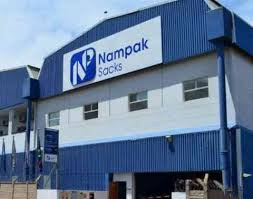
PACKAGING concern, Nampak Zimbabwe Limited (NZL) recorded a 56% decline in its trading profit for the firm’s first quarter ended December 31, 2024, owing to a 23% drop in revenue.
This drop in trading profit is from a 2023 comparison.
In its trading update for the firm’s first quarter ended December 31, 2024, Nampak blamed the ongoing macroeconomic problems for the reduced demand for its products, which cut revenue.
A few days ago, CEO Africa Roundtable revealed that many businesses were on the verge of collapse.
The macroeconomic challenges negatively affecting businesses, and therefore demand for Nampak products, include exchange rate volatility, growing informalisation, high taxation, rising utility costs, and policy inconsistency.
“Demand for packaging across all business units faced pressure due to intensified competitor activity, especially in the commercial segment,” Nampak said.
“Additionally, we encountered supply chain disruptions with raw materials arriving via Beira Port, stemming from the political unrest in Mozambique following the disputed election results.
“Although the raw materials were ultimately received, the delays impacted our delivery capabilities during the festive season.
- Nampak records 56% profit drop as revenues shrink
Keep Reading
“The ongoing macroeconomic challenges are not yet resolved and will inevitably affect demand, as the wholesale and retail sectors navigate considerable branch closures that threaten the sustainability of businesses.”
Nampak’s parent company, South African packaging firm Nampak Limited, is already in the process of disposing of its local subsidiary owing to macroeconomic challenges.
“Group revenue for the quarter, expressed in USD terms, was 23% lower than in the prior year period, while trading profit declined by 56%.
“This decrease in revenue reflects the reduced demand across all business units,” Nampak said.
“Notably, the gross profit margin held steady compared to the previous year, whereas the trading profit margin experienced a 9% drop. This reduction in trading margin is largely attributable to the hyperinflation accounting effects from the prior year’s comparative period.”
Nampak transitioned to the US dollar on April 1, 2024, days before the introduction of the Zimbabwe Gold.
Under Nampak’s Hunyani Paper and Packaging subsidiary, the first quarter saw the unit’s Corrugated Products Division record a sales volume decline of 35% compared to the 2023 period.
This decrease was primarily due to heightened competition within the commercial segment and a reduced carryover of late-season orders from tobacco merchants.
However, the unit’s Cartons, Labels, and Sacks Division achieved a 4% increase in sales volumes compared to the prior year, fuelled by a recovery in commercial sales.
Regarding Mega Pak, Nampak said this subsidiary experienced a 13% decline in volumes compared to the same period last year.
“The intermittent power disruptions from the Zimbabwe Electricity Supply Authority have led to increased operational costs and a rise in plant breakdowns, stemming from the resultant stop-start production process,” Nampak said.
Lastly, Nampak’s CarnaudMetalbox subsidiary experienced a 7% decline in sales volumes during the period under review due to a significant reduction in its metals volumes.
“The operating environment in Zimbabwe is undeniably complex, impacted by policy changes and currency instability,” Nampak said.
“We expect that the government will take decisive steps to effectively address the increasing risks of company closures and retrenchments.”
The group said it would continue to focus on cost containment measures to protect margins and drive profitability across all operating units.










